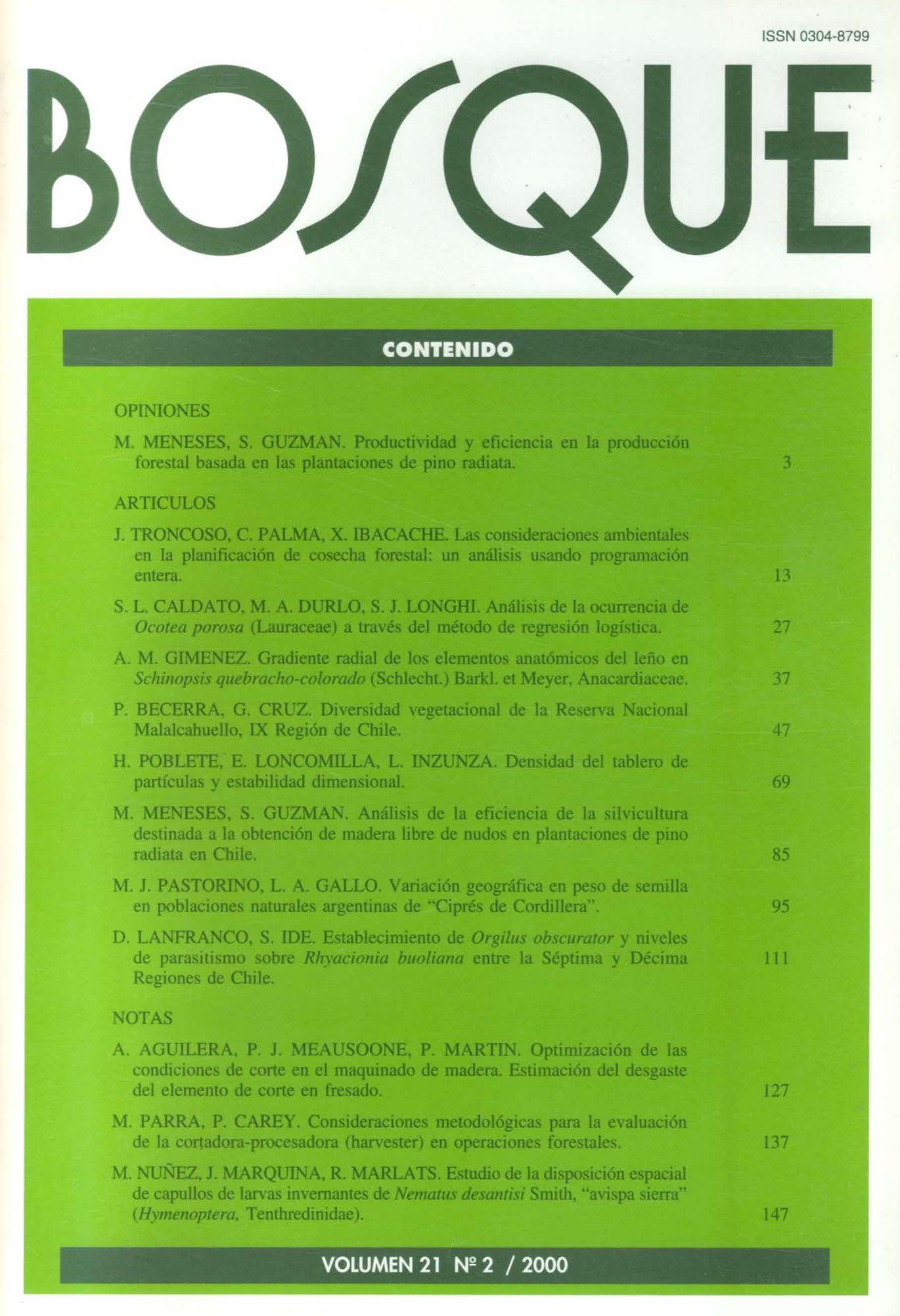Analysis of the occurrence of Ocotea porosa (lauraceae) using the logistic regression method
Main Article Content
Abstract
This study was directed towards examining factors that influence the occurrence of Ocotea porosa (Nees) L. Barroso (Lauraceae) in the mixed Ombrophylous forest at the Caçador Forest Reserve in Santa Catarina State, Brazil. The sampling area was 8 ha and consisted of four subunits (20 x 500 m) distributed in the four cardinal directions. A total of eight subunits were installed, and each was divided into 50 plots of 10 x 20 m. In each plot, all individuals of O. porosa 10 cm or more in height were noted. Data on basal area, inclination, exposition, altitude and the qualitative type of soil were analyzed by logistic regression methods to verify the influence of site and competition characteristics on the occurrence of O. porosa. The main factor influencing the presence of the species was a negative correlation with the hydric soil. The basal area was positively correlated for the population as a whole, and negatively correlated for the natural regeneration in relation to the occurrence of the species.

